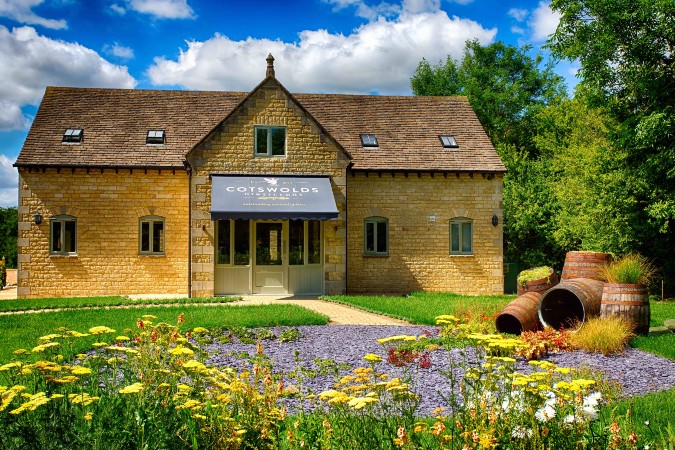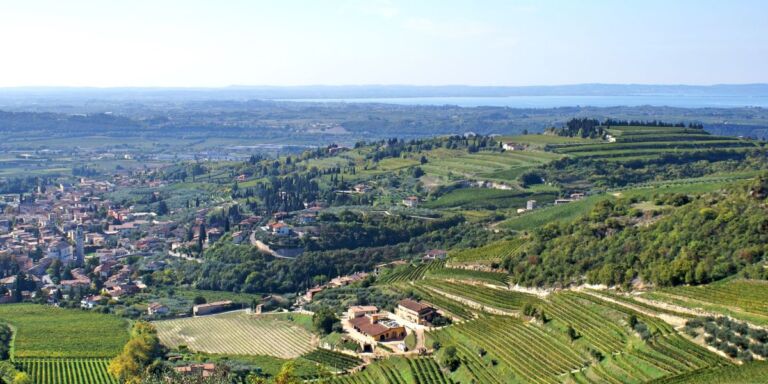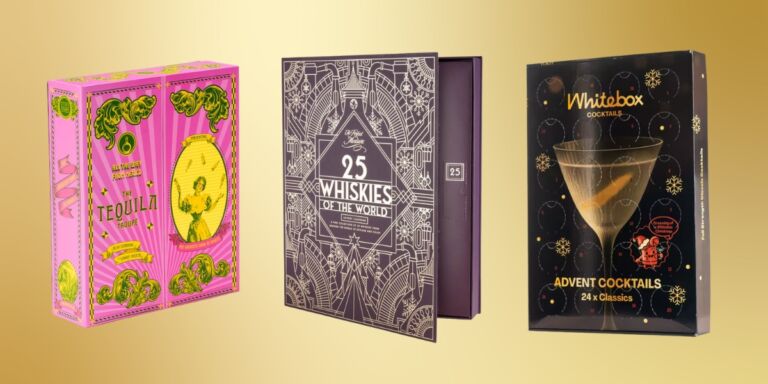Single-malt whisky is as synonymous with Scotland as the tartan-liveried shortbread tin complete with image of a stag peering through the Highland mist. The last decade, however, has seen a clutch of pretenders emerge to this Caledonian throne, via an increase in both the quality and popularity of ‘New World whisky’ – single malts made in the Scottish style but in nontraditional whisky-making countries.
It is the single-malt style that has made Scotch whisky so renowned around the world. Whereas Irish whiskey is marked mostly by triple distilling and the use of both malted and unmalted barley, and American bourbon uses a mixture of cereals including corn, wheat and rye, Scotch single malt is a more refined dram. The product of just one distillery, it involves taking barley fresh from the field, malting and drying the kernels before grinding them down and washing out their sugars, then fermenting the resulting sweet liquid into a strong beer before refining it through no fewer than two distillations in copper pot stills. In the case of Scotch, the resultant spirit goes on to be aged in oak casks for three years or more.

Scotland does not own the copyright on this way of making whisky, however. A single malt can be made anywhere. And just as Champagne producers have lent their approach to other parts of the world (just look at the growing reputation of English sparkling wine, built on the traditional method of northern France), so the ‘Scotch’ way of making single malt is being employed the world over – to increasing levels of quality.
Malt whisky is now produced in more than 30 countries, as diverse as Germany, Australia and the US. As of 2020, China joined the rush, with the opening of the Dong-Ye distillery in Hunan province, followed last year by Laizhou Distillery in Sichuan province, while drinks giants Diageo and Pernod Ricard are developing Chinese distilleries in the Yunnan and Sichuan provinces, respectively. Even Scotland’s noisy neighbours in England are making malt in the Scottish style, with more than 20 distillers operating south of whisky’s homeland.

Traditionally, the most acclaimed source of single malts made in the Scottish style has been Japan. The country’s first dedicated single-malt distillery, Yamazaki, dates back almost a century, having opened in 1923. Intentionally constructed in an area of Japan that was most akin to the Scottish Highlands, it kickstarted an ongoing quest, inspired by Scotland’s malt whisky scene, to produce world-class whisky that can stand shoulder to shoulder with Scotch.
Now considered an established whisky-making region, Japan is known for its diligence and dedication to detail in distilling, with its top bottlings highly sought after by collectors. Single malts from distilleries such as Hakushu, Chichibu and Yamazaki itself have set the whisky world alight. Last year’s release of the Yamazaki 55-year-old was one of the most highly anticipated of the year. And at £50,000 a bottle (and now nearly double that at auction), it further cemented Japan’s status as a serious player.
Scotland does not own the copyright on its way of making whisky. A single malt can be made anywhere
This success, coupled with the global status of single malt, is now inspiring a host of New World countries to aim high with their own Scottish style malt. Among the leading exponents is Taiwan. This island in the East China Sea is home to two notable distilleries. The state-owned Nantou has been producing the Omar single malt since 2008, with the first bottlings released in 2013. But it is the powerhouse producer of Kavalan that has set the scene for an unlikely whisky culture on the island. Founded in 2005, with its first spirit distilled in March of the following year, Kavalan has enjoyed incredible success in a relatively short period of time. The growth in demand for its single malt has allowed the distillery to expand further, and it is now one of the ten largest single-malt producers in the world.

The whiskies produced at Kavalan, using Scottish copper pot stills and the same traditional processes employed across Scotland, have found favour not just with consumers (the whiskies are exported to more than 60 countries) but critics too. Kavalan picked up 15 gold medals at last year’s IWSC, along with a coveted trophy for its Podium single malt. In many ways the poster child for New World whisky, it has developed a style that leans heavily on the traditional Scottish single malt but retains an individuality that has seen it elevated to world-class status.
Kavalan starts by taking only a very small percentage, or a ‘narrow cut’, of the second distillate, resulting in a complex, rich and malt-forward profile. This spirit is then matured in a mixture of former Sherry, wine, fortified wine and bourbon casks, and often bottled from single casks, at high strength. If New World wines are known for their bombastic, fruit-forward style, this is the single-malt equivalent – whisky turned up to 11. The resulting mature liquid is flavoursome, robust and utterly delicious, as evidenced by Kavalan’s Manzanilla and Moscatel matured single casks, both of which scored a whopping 98 points at the 2021 IWSC.

The world’s largest consumer of whisky is India, though the liquor labelled as such and so widely consumed across this vast nation would not pass for whisky elsewhere. Most of it is a vodka-style distillate blended with other spirits, such as imported whisky from Scotland or Ireland. Beneath this, though, is a growing and thriving single-malt scene. The trailblazer on this front is the Amrut distillery, based near Bangalore, in the south of the country. The distillery evidently has grand ambitions: when it launched its single malt in 2004, it did so in Scotland, no less. Far from being hounded out as an imposter, Amrut grew in stature, and the distillery now produces more than a million litres a year, exporting to over 50 countries.
Today, India is home to eight single-malt distilleries, among which Paul John and Rampur are notable in bottling under their own distillery names. For a fine example, try Paul John Brilliance, made using ‘six-row’ barley from the foothills of the Himalayas, distilled and matured in Goa and producing a complex, fruity spirit with a rounded mouthfeel that calls to mind Scotch from a bygone era. Together with Amrut, the pair have garnered impressive results across a number of expressions over the past few years and have also – like other New World whiskies – been building an enviable reputation for quality single malts made in the Scottish style. This reputation has been forged in just under a decade, and with plenty of stock now maturing away and a developing focus on purchasing quality casks, Indian malt whisky is very much one to watch.

Arguably the powerhouse of New World whisky, however, is Australia. The winemaking behemoth is now home to over 70 whisky distilleries, many of which boast locally made copper stills, use local barley and wine barrels for maturation, and are inspired by the Scottish style of single-malt production.
In this galaxy of distilleries, one of the brightest stars is Starward, in Melbourne. Founded by David Vitale in 2008, Starward started life in a small industrial unit before expanding, with substantial investment from Diageo (the world’s biggest producer of single-malt Scotch whisky and owner of the Johnnie Walker brand of blended Scotch), to bigger premises in 2016. Starward has since built a reputation for flavoursome single malts matured in the temperamental and often humid Melbourne climate. Unlike in most countries, where spirit mellows in cask over the years, losing alcohol (‘the angels’ share’) to the atmosphere in the process, at Starward the alcohol content rises in cask over the years. As a consequence, the casks are filled at a lower ABV than at most distilleries – Vitale claims they are ‘the hardest-working casks in the world of whisky’ – thereby harnessing a unique environmental quirk that is critical to what makes its single malt so distinctive.
If this is an uprising, it is not a coup. The quality of these whiskies simply gives greater choice for the single-malt drinker
Australian malt whisky distilling was kickstarted by Bill Lark, who built Lark distillery on Tasmania in 1992. Its success continues today (the Chinotto cask release picked up a gold medal and 95 points at the 2021 IWSC), and the island has developed its own scene-within-a-scene, with the likes of Sullivans Cove and Hellyers Road cementing Tasmania’s place in the top rank of Australian whisky heritage.
The heritage of Scottish whisky is, of course, incalculably stronger, and it is the work done in establishing Scotch as a luxury drink the world over that has set the scene for New World whiskies to emerge. If this is an uprising, it is not a coup. The quality of these whiskies simply gives greater choice for the single-malt drinker. It brings a levelling up, an egalitarianism to the category that should be welcomed by anyone who calls themselves a single-malt drinker.
Five New World whisky countries to watch

England
When you consider England’s rich distilling history – notably the flagship spirit of gin – it is remarkable that when St George’s Distillery opened in Norfolk in 2006, it became the first new English malt whisky distillery in over a century. Making both peated (The English Smokey) and unpeated (The English Original) malt, it has set the scene for others to follow, creating whisky of which some of their neighbours across the border would be proud. Other producers of note are The Cotswolds Distillery (above), founded in 2014 (and whose Founder’s Choice is a flavourbomb of spice and rich fruits), and The Lakes, which opened in the same year in the Lake District and boasts former Macallan whisky-maker Dhavall Gandhi among its ranks. The quality of production at both is on a par with newer Scotch distillers, despite the lack of long-aged stocks.

France
France has a long and proud history of distilling, be it the world’s oldest recorded spirit in Armagnac, the luxury brandy that is Cognac, or indeed vodka distilling from wheat, in the shape of Grey Goose. Malt whisky, then, is the logical next step, and quality is naturally to the fore. Distillerie Warenghem was the first big mover. Though founded in 1900, it only started making malt whisky in 1994, releasing France’s first ever single malt, Armorik, in 1998. It then distilled the acclaimed Amaethon for Spiritique, whose core team (pictured above) is taking production in-house as of this year. Today, France boasts nearly 50 whisky distilleries, with quality constantly on the up. As evidence of just how the country’s malt whisky has progressed since the turn of the century, drinks giant Rémy Cointreau bought Alpine producer Domaine des Hautes Glaces in 2017; its Moissons malt is bursting with notes of freshly baked pastry, white wine and lemongrass.

USA
The United States is famed for bourbon, a whiskey made using a mix of grains and often distilled in continuous stills rather than copper pot stills. Single malt, by comparison, has usually been imported, with ‘Scotch’ generally cast as a luxury product. Now, a new movement for start-up distilleries to eschew bourbon and try their hand at single malt is maturing nicely. Westland Distillery (above), founded in 2011 in Seattle and using local barley and peat, is one of the leaders of the scene and is another New World producer to join the Rémy Cointreau stable. The Westland Peated Malt is a unique rendering of American smoky whiskey and does not disappoint. For other examples, look to Balcones in Texas, making a single malt as big in flavour as the state itself, while FEW in Chicago, Kings County in New York, and Corsair in both Bowling Green, Kentucky, and Nashville, Tennessee, are worth getting to know.

New Zealand
Not to be outdone by the Aussies, the malt whisky distilling scene in New Zealand is rapidly taking shape, growing in both size and reputation. Cardrona (above and opening image), on New Zealand’s South Island, is the world’s most southern whisky distillery. Using copper pot stills made in Scotland, it released its first malt in late 2018, with more expressions following in 2020. Its whiskies are young and malty, but no less delicious for that. At the other end of the country, on the North Island, is the Thomson Whisky distillery. Founded in 2014, it takes its brew from the local brewery and has been releasing whisky since 2018. Its smoky release matured in a Pinot Noir barrel, Local Folk & Smoke, is highly regarded.

Sweden
The Swedes have a strong sense of place, with Swedish brands immediately identifiable, and the country is now home to more than ten distilleries. The Mackmyra distillery (above) was built in 1999, adding a new facility in 2011, which was constructed – unusually – as a tower, with the process of making malt starting at the top and each stage taking a floor. This gravity-conscious distillery is matched with a subterranean maturation warehouse in an old mine. The result is a punchy and powerful Swedish single malt. Meanwhile, the High Coast distillery founded in 2010 was initially named Box, and with its whitewashed walls and small copper pot stills, it could almost be set in Scotland. The whisky, crafted by head distiller Roger Melander (named Distillery Manager of the Year, Rest of the World, at the Icons of Whisky awards in 2021) is malt-forward and carries notes of fresh apple and cinnamon.
Read more
- 18 of the best ‘new world whiskies’ recommended by the IWSC

This article is taken from the latest issue of Club Oenologique








